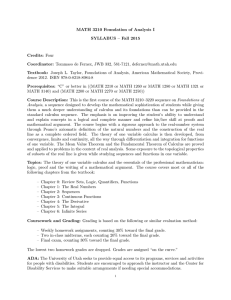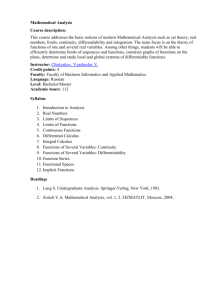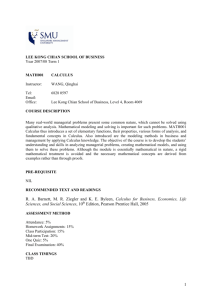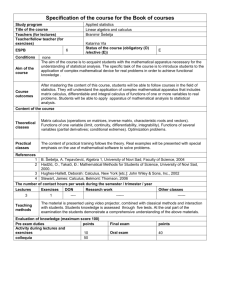MATH 3220 Foundation of Analysis II SYLLABUS – Fall 2015 Credits: Four
advertisement
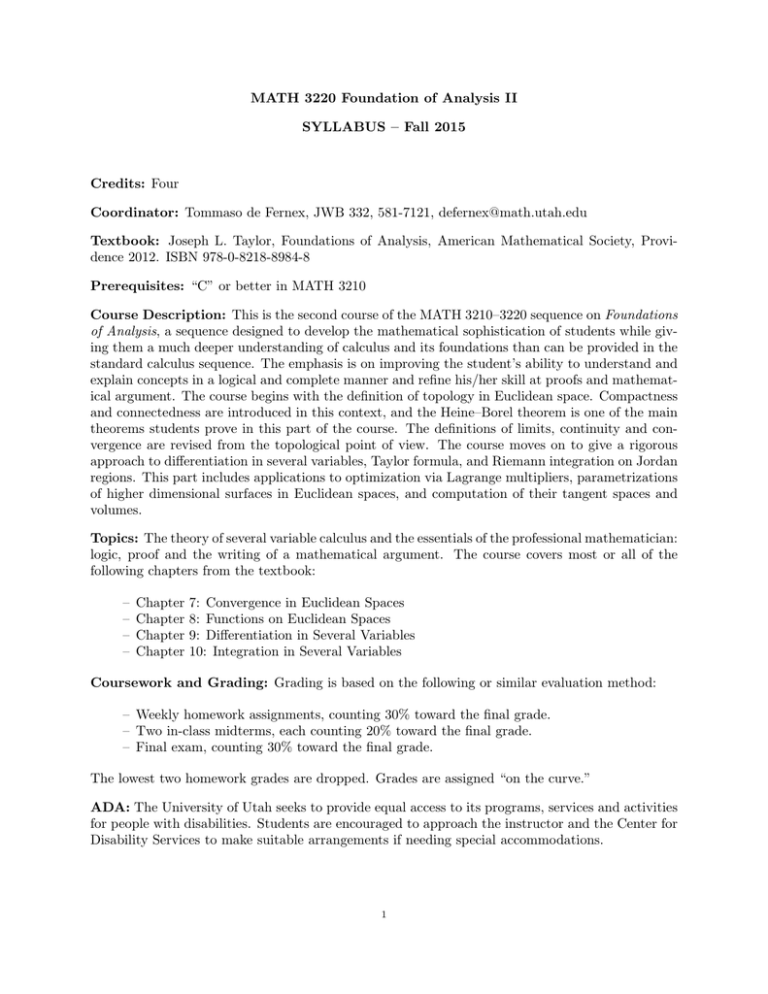
MATH 3220 Foundation of Analysis II SYLLABUS – Fall 2015 Credits: Four Coordinator: Tommaso de Fernex, JWB 332, 581-7121, defernex@math.utah.edu Textbook: Joseph L. Taylor, Foundations of Analysis, American Mathematical Society, Providence 2012. ISBN 978-0-8218-8984-8 Prerequisites: “C” or better in MATH 3210 Course Description: This is the second course of the MATH 3210–3220 sequence on Foundations of Analysis, a sequence designed to develop the mathematical sophistication of students while giving them a much deeper understanding of calculus and its foundations than can be provided in the standard calculus sequence. The emphasis is on improving the student’s ability to understand and explain concepts in a logical and complete manner and refine his/her skill at proofs and mathematical argument. The course begins with the definition of topology in Euclidean space. Compactness and connectedness are introduced in this context, and the Heine–Borel theorem is one of the main theorems students prove in this part of the course. The definitions of limits, continuity and convergence are revised from the topological point of view. The course moves on to give a rigorous approach to differentiation in several variables, Taylor formula, and Riemann integration on Jordan regions. This part includes applications to optimization via Lagrange multipliers, parametrizations of higher dimensional surfaces in Euclidean spaces, and computation of their tangent spaces and volumes. Topics: The theory of several variable calculus and the essentials of the professional mathematician: logic, proof and the writing of a mathematical argument. The course covers most or all of the following chapters from the textbook: – – – – Chapter Chapter Chapter Chapter 7: Convergence in Euclidean Spaces 8: Functions on Euclidean Spaces 9: Differentiation in Several Variables 10: Integration in Several Variables Coursework and Grading: Grading is based on the following or similar evaluation method: – Weekly homework assignments, counting 30% toward the final grade. – Two in-class midterms, each counting 20% toward the final grade. – Final exam, counting 30% toward the final grade. The lowest two homework grades are dropped. Grades are assigned “on the curve.” ADA: The University of Utah seeks to provide equal access to its programs, services and activities for people with disabilities. Students are encouraged to approach the instructor and the Center for Disability Services to make suitable arrangements if needing special accommodations. 1
